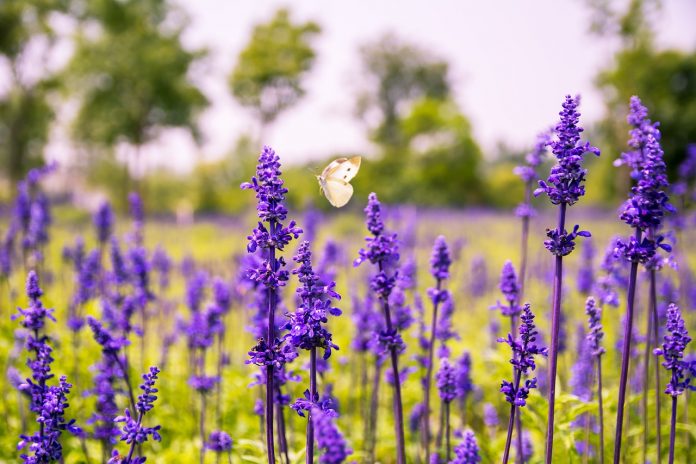The nights start to feel a little chillier and the air a little crisper as summer begins its slow fade to fall. The days grow shorter, the birds become fewer and the brilliant greens turn to orange, burgundy, brown and gold. The subtle changes will definitely give you fall fever; however, I always start thinking about it well before it arrives.
As most of my gorgeous summer blooms are in their final weeks, I find myself observing my flower garden with a critical eye. Even after I’ve pruned the wilted blossoms and dried out stems, my garden feels gloomy. There’s just not much color left. I suppose I could call it quits for the year, let the butterfly weed steal the show for another month and wait until next spring for my garden to reboot. Or I could add some flowering plants that will provide plenty of color throughout fall and avoid this downtime year after year.
Adding fall color
We’re all aware of the classics — chrysanthemum, aster and goldenrod. But did you know there are so many more choices?
You can choose from perennials, annuals, vines and even bulbs. Some plants are exclusively fall bloomers. Others start earlier in the season and extend into fall, but are under-appreciated until the more vibrant colors of summer begin to fade.
Extended season bloomers

These plants will start blooming in the summer and continue until frost.
- ‘Walker’s Low’ catmint, purple
- Tickseed, yellow
- Salvias (sage), various colors
- Geraniums, various colors
- Orange-flowered Tango hyssop, orange
- ‘Fiesta del Sol’ Mexican sunflower, orange and yellow
Early fall perennials

These plants generally bloom from August to early October.
- Black-eyed Susan, black and yellow
- Perennial sunflower, yellow and brown
- Russian sage, purple
- Bee balm, various colors
- Pink Japanese anemones, pale pink
- Hyacinth bean vine, purple
- Sedum ‘Autumn Joy’ and ‘Autumn Fire,’ mauve
- White snakeroot, white*
- Monkshood, purplish-blue*
- Fall Crocuses, various colors
Fall Annuals

- Zinnias, various colors
- Lantana, various colors
- Ornamental hot peppers, red, yellow, orange, purple
- Cosmos, various colors
- Plumed and crested cockscomb, red, yellow, orange, pink
Toxicity notes: The plants marked with an * are toxic and should be planted with caution.
White snakeroot. White snakeroot contains a tremetol, a poisonous toxin if consumed directly or second-hand. When cattle eat white snakeroot, its beef and milk become contaminated. If contaminated beef or milk are later ingested by humans, it can lead to a condition called milk sickness.
Monkshood. Monkshood is highly poisonous and should never be grown within reach of children or pets. All parts of the plant are toxic, including the sap. It’s best to appreciate the plant for its beauty in the garden and not as a cut flower. When you are gardening around monkshood, be sure to wear gloves to prevent absorption through the skin.
Spectacular seed heads

Some flowers continue to add beauty to your garden even after their brilliant petals have fallen off. Some late-summer/early-fall bloomers leave behind attractive, uniquely-shaped seed heads. Rather than removing them all, leave some behind. While cutting off faded blooms keeps your garden producing more flowers, it also deters seed formation. Leftover seed heads add another layer of beauty to your garden, attract birds throughout the fall and may even create some volunteer seedlings next spring.
These flowers produce beautiful seed heads:
- Coneflowers
- Mexican sunflower
- Annual salvias
- Hyssops
Fall foliage

Flowers aren’t the solely responsible for all the colors during fall, so don’t forget to incorporate some foliage into your garden. Two great options are annual coleus and perennial Heucheras.
Coleus. Coleus has large, vibrant green and burgundy leaves. It is considered a safe plant, but there are now more sun-tolerant varieties.
Heucheras. Heucheras is great for providing color to a lightly shaded garden. Its colors range from stainless steel grey to burgundy, rose, chartreuse and coral.











